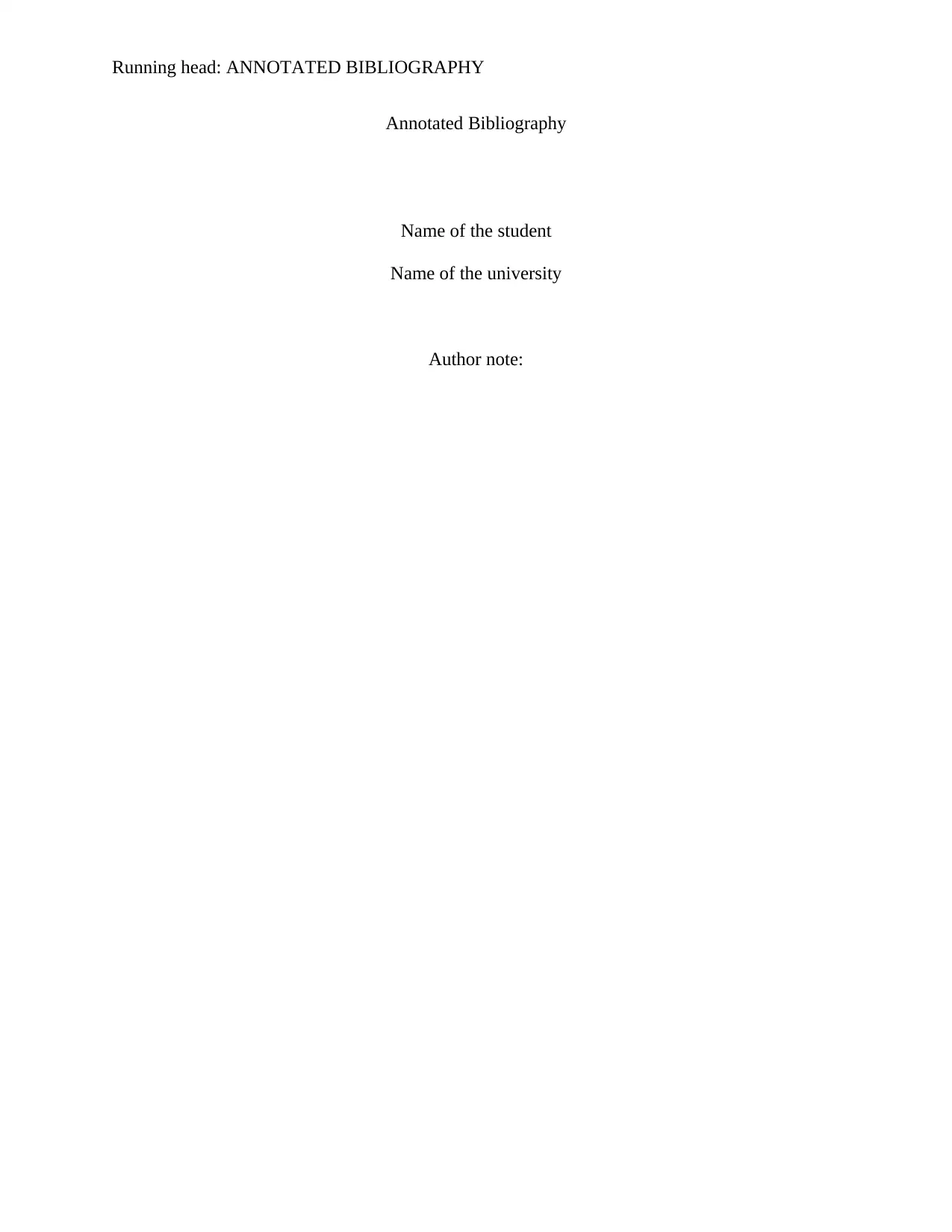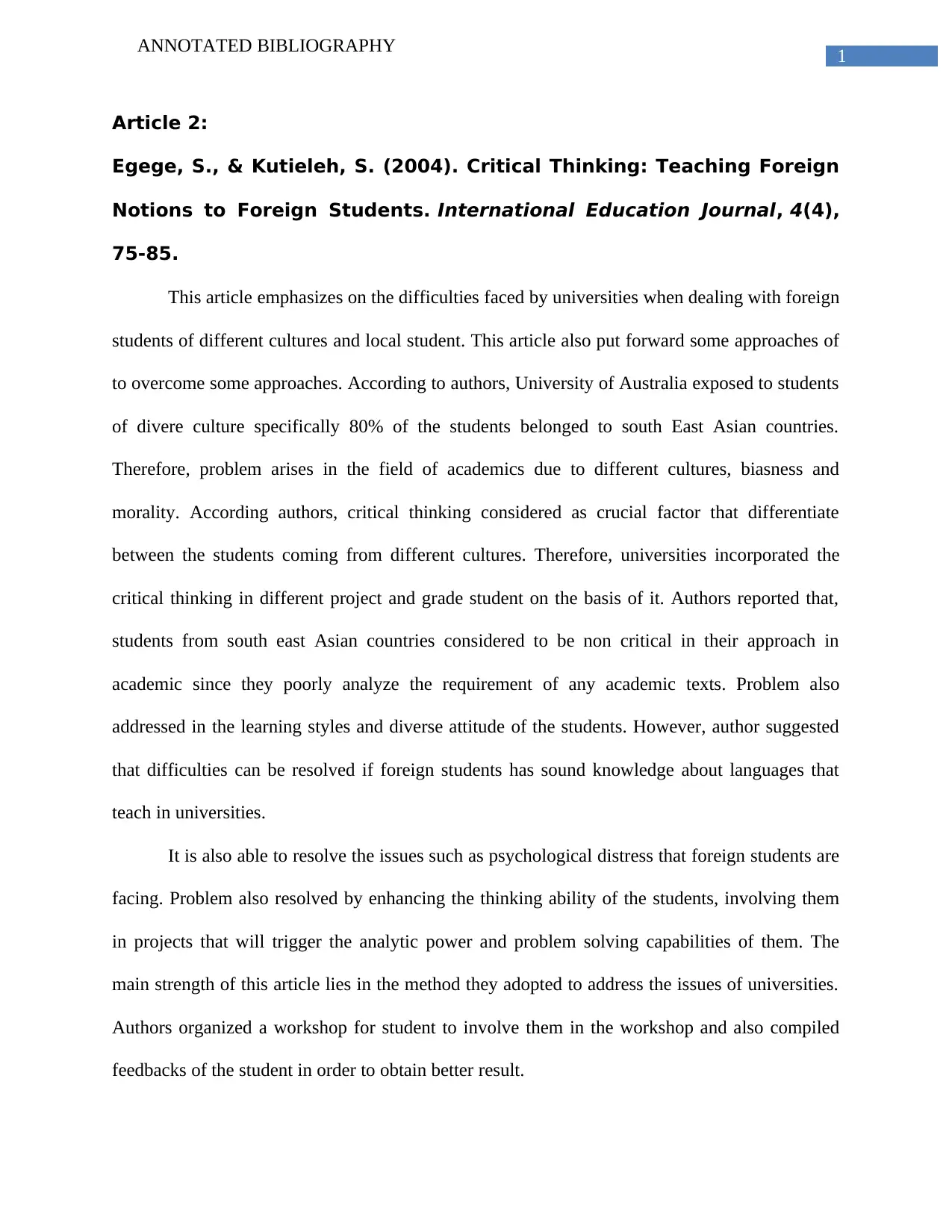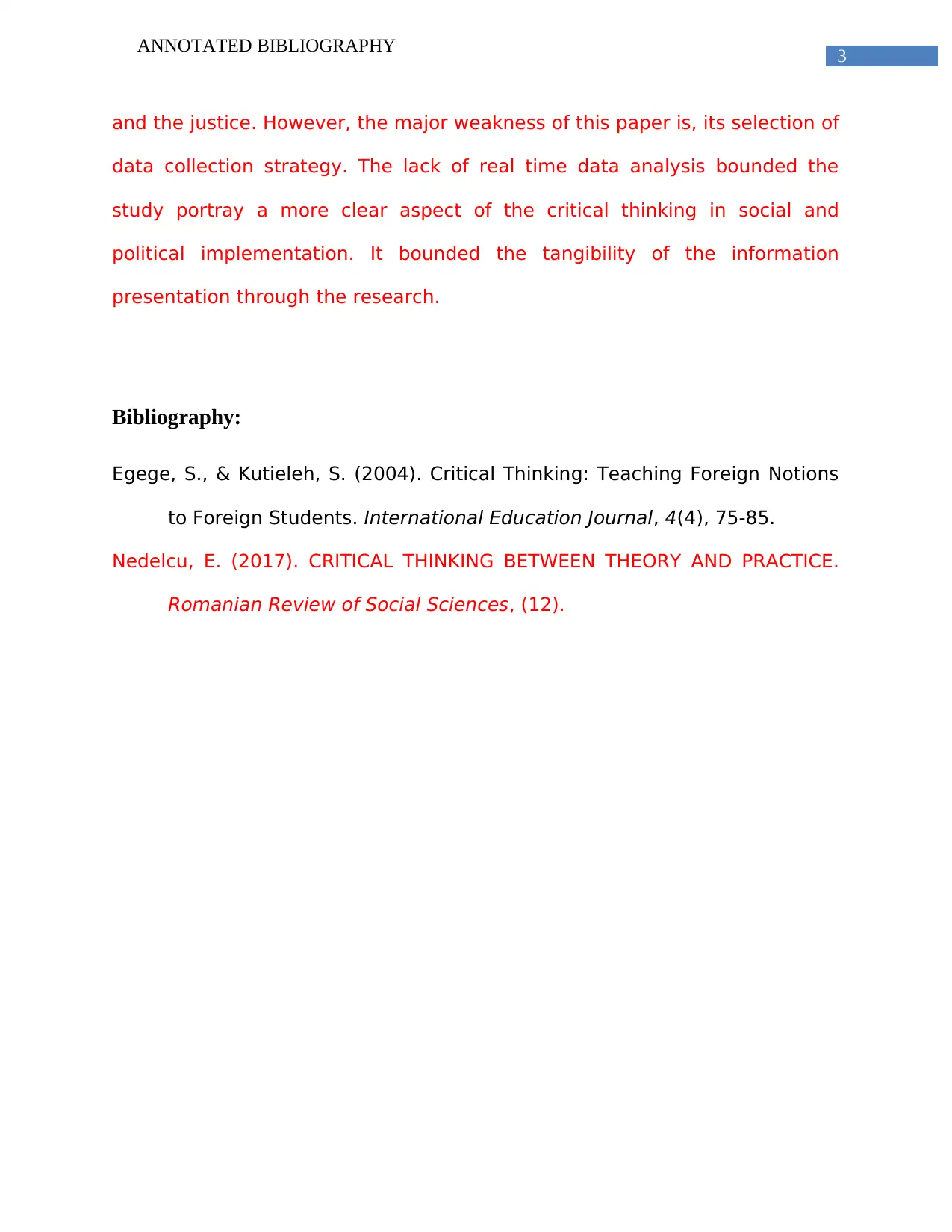Annotated Bibliography: Critical Thinking for University Students
VerifiedAdded on 2023/06/08
|4
|719
|179
Annotated Bibliography
AI Summary
This annotated bibliography provides a concise overview of two research articles focusing on critical thinking within the context of higher education. The first article, by Egege and Kutieleh (2004), examines the challenges faced by universities when dealing with foreign students from diverse cultural backgrounds, particularly those from Southeast Asian countries. It highlights the importance of critical thinking in academic performance and proposes strategies to address cultural biases and differences in learning styles. The second article, by Nedelcu (2017), delves into the theoretical and practical aspects of critical thinking, differentiating between critical thinking, critical spirit, and criticism. It explores the social benefits of critical thinking in social and political spheres, and the importance of transparency in promoting social justice. The bibliography also notes the strengths and weaknesses of each article, including the methodologies used and the impact on the understanding of critical thinking in different contexts. This resource is valuable for students seeking to understand critical thinking and its application in academic and social settings, offering insights into challenges and potential solutions in higher education.
1 out of 4








![[object Object]](/_next/static/media/star-bottom.7253800d.svg)